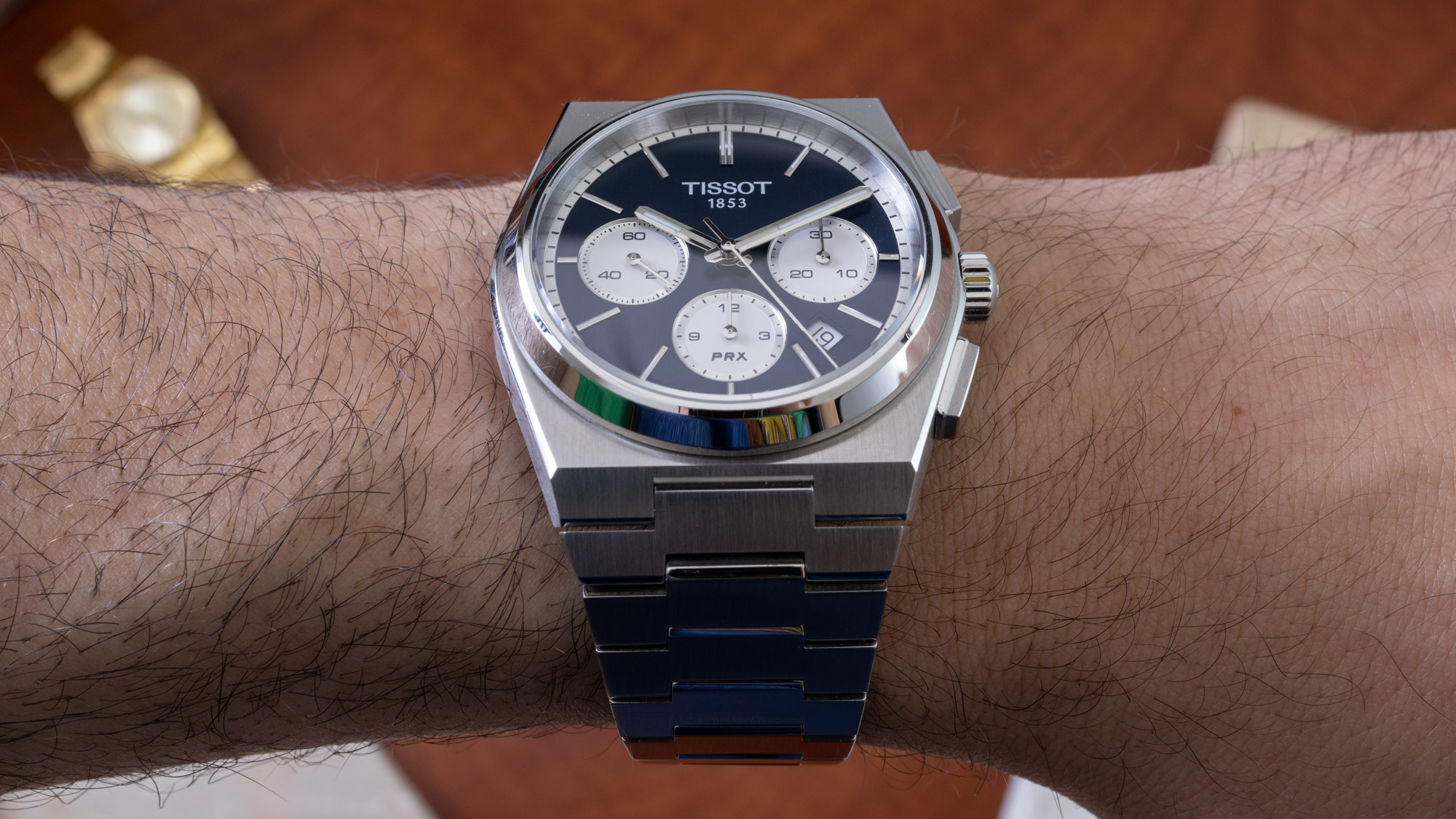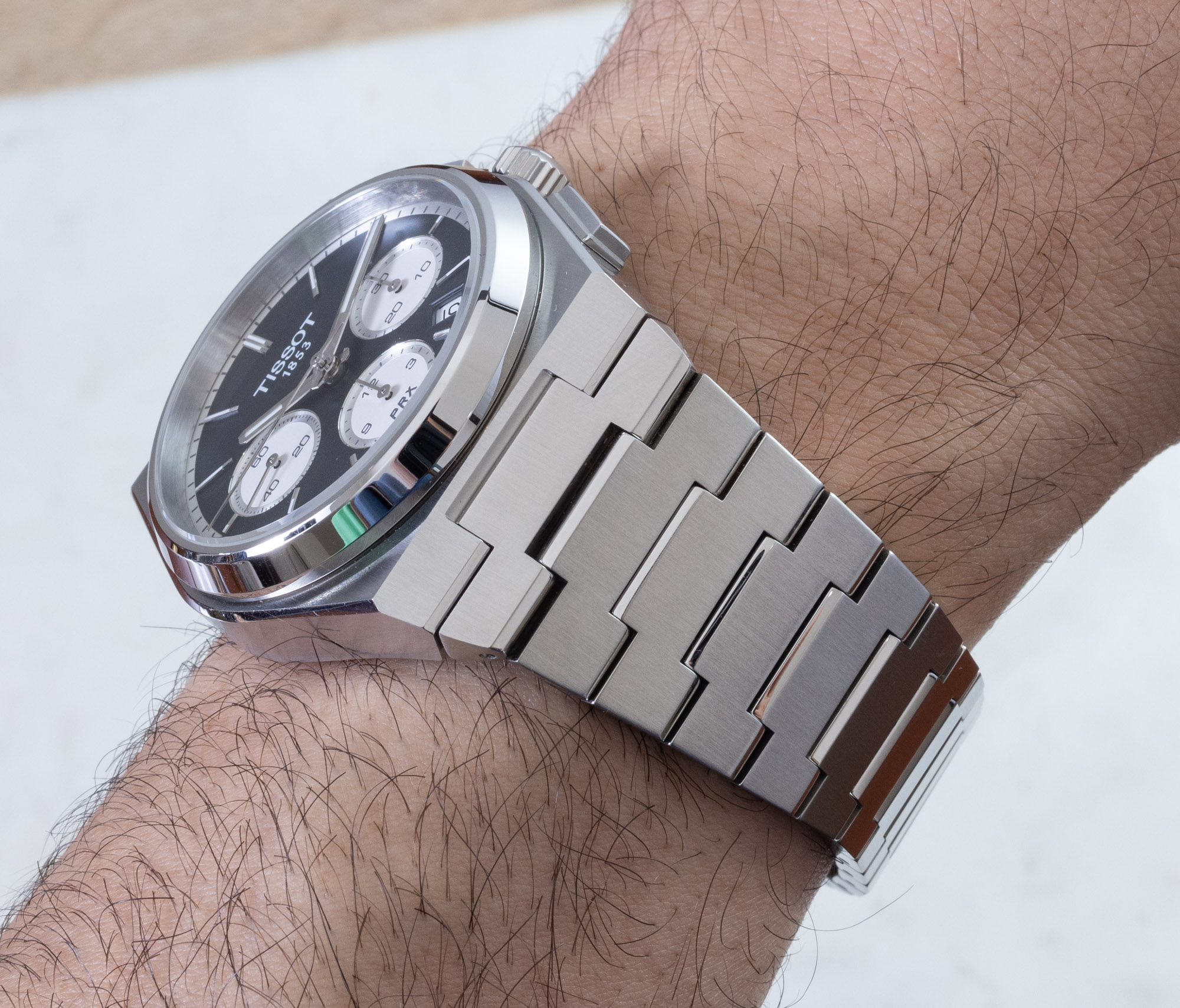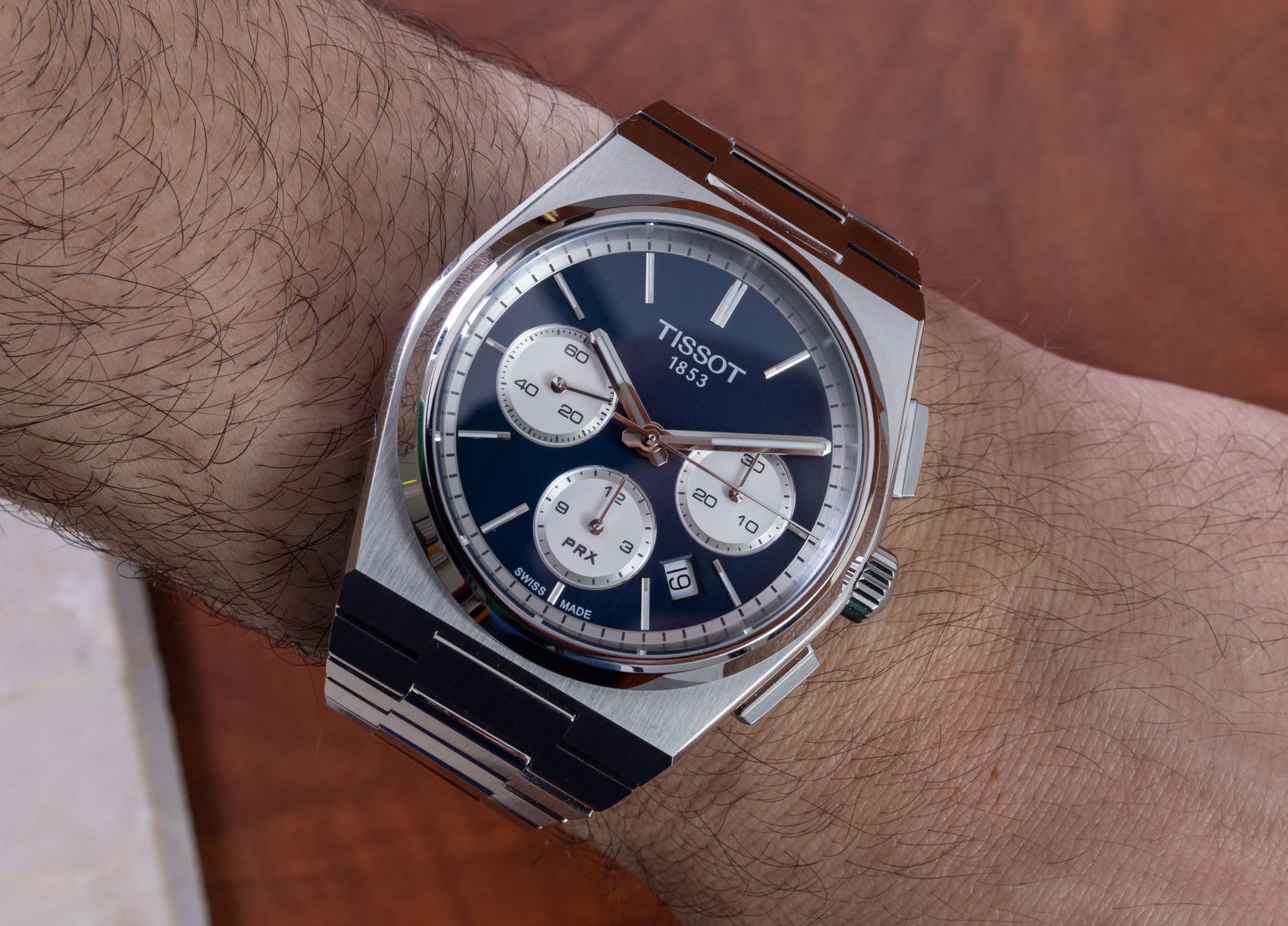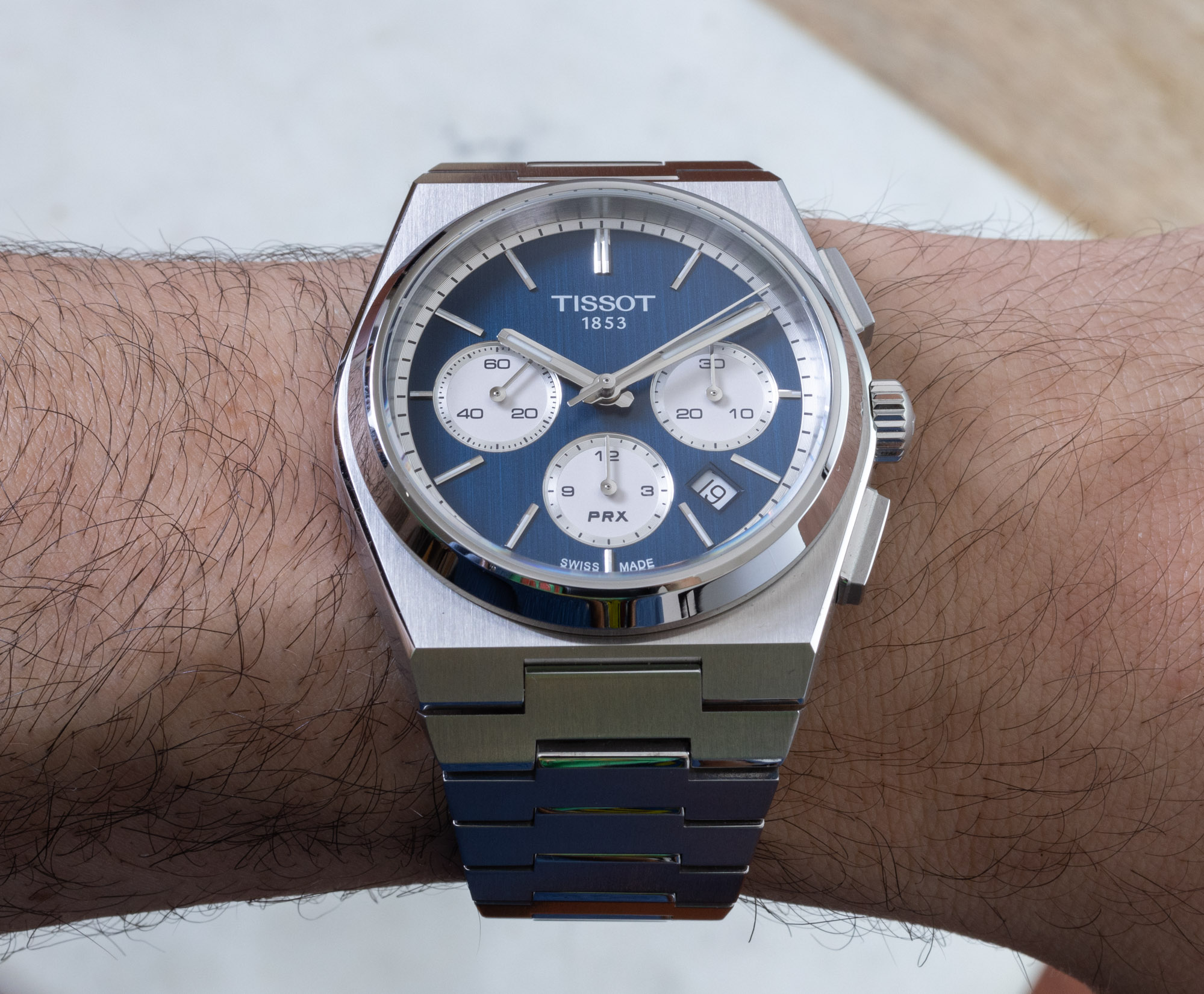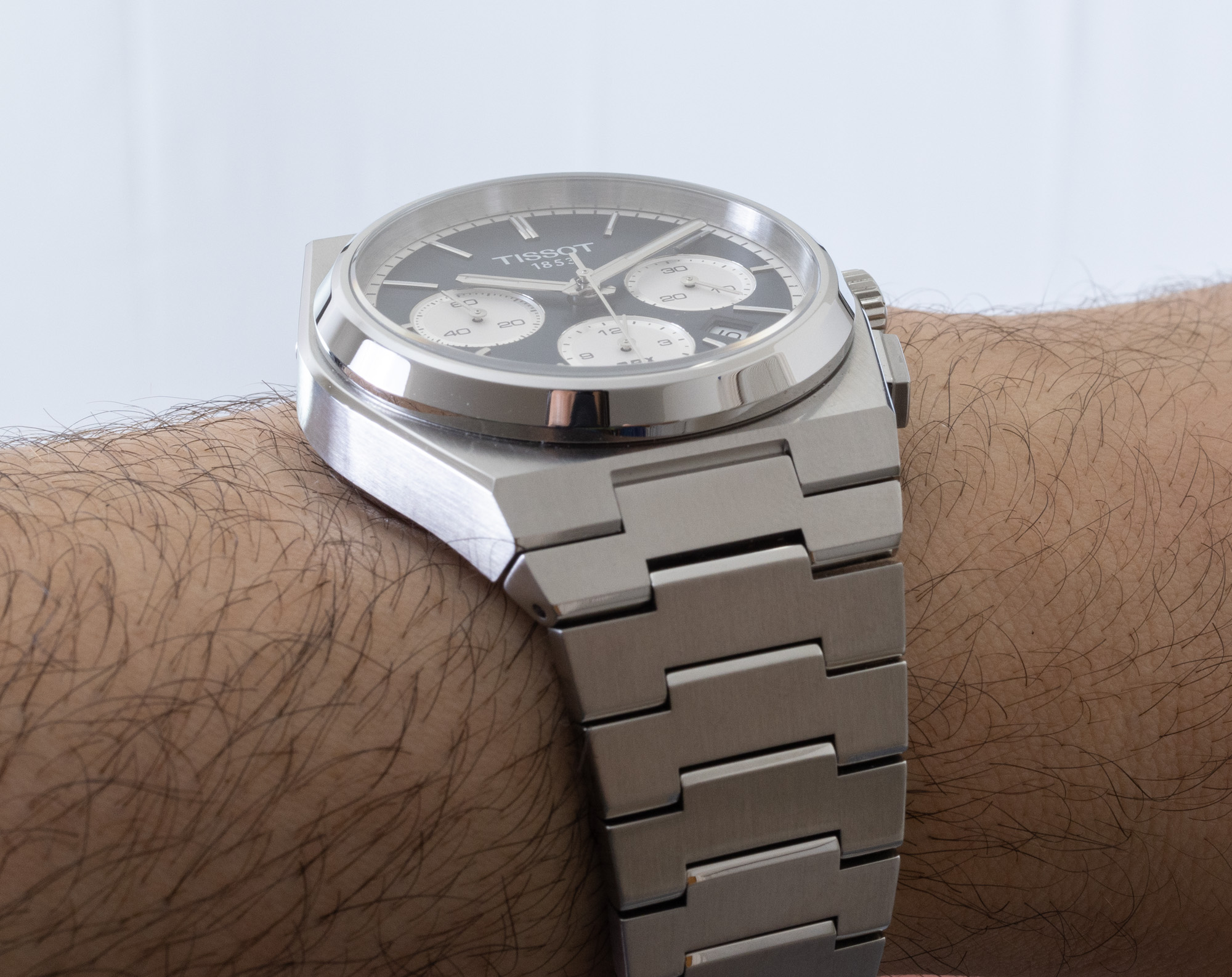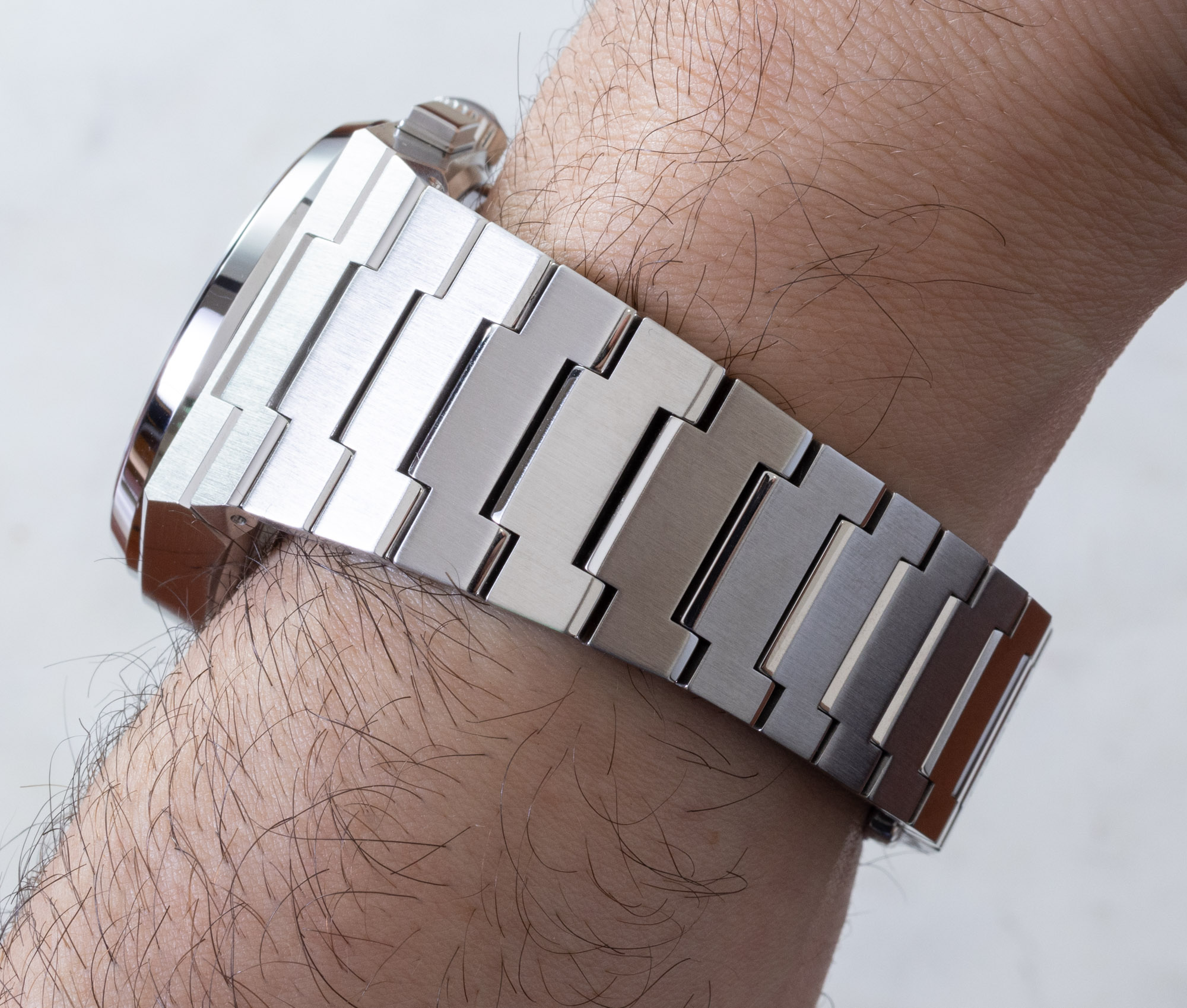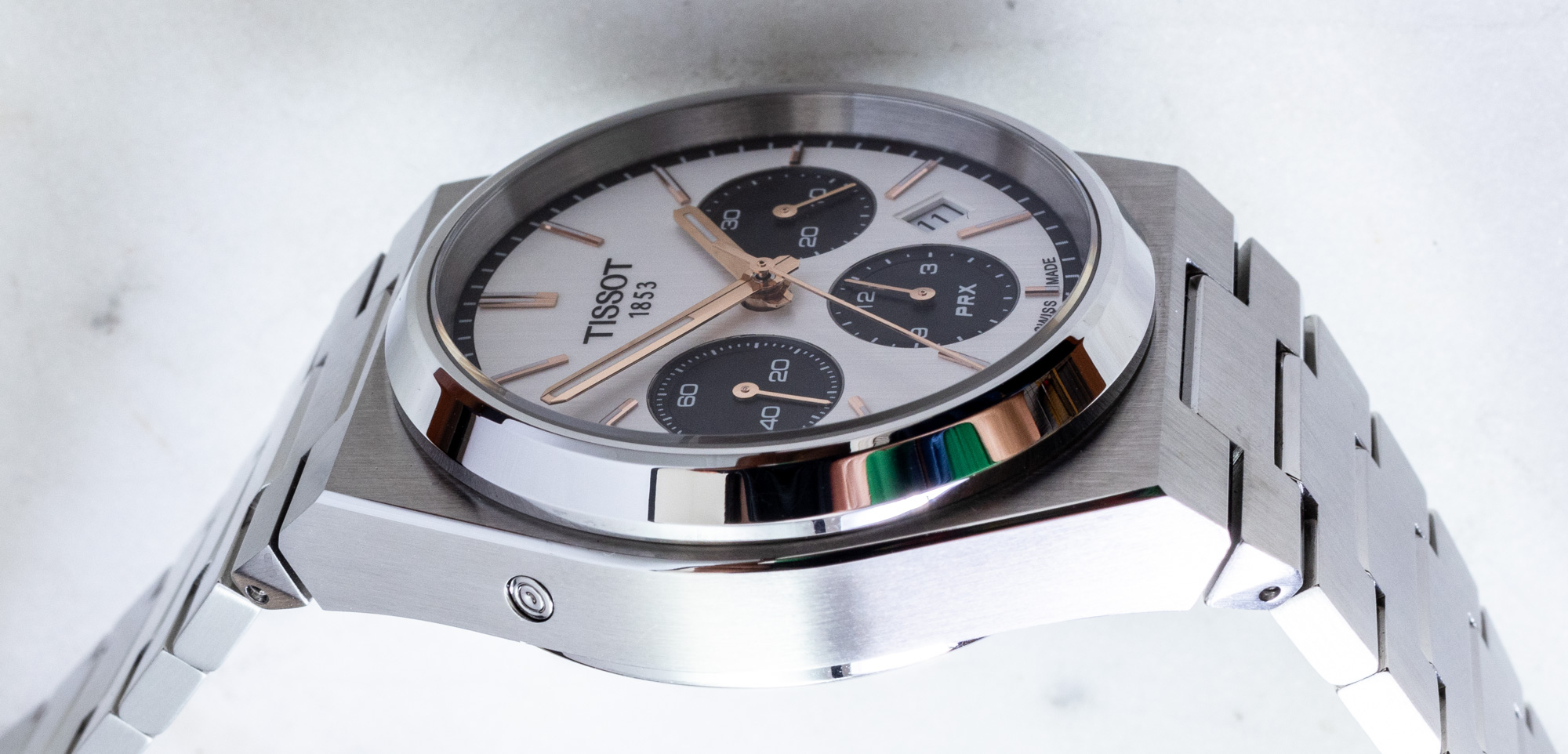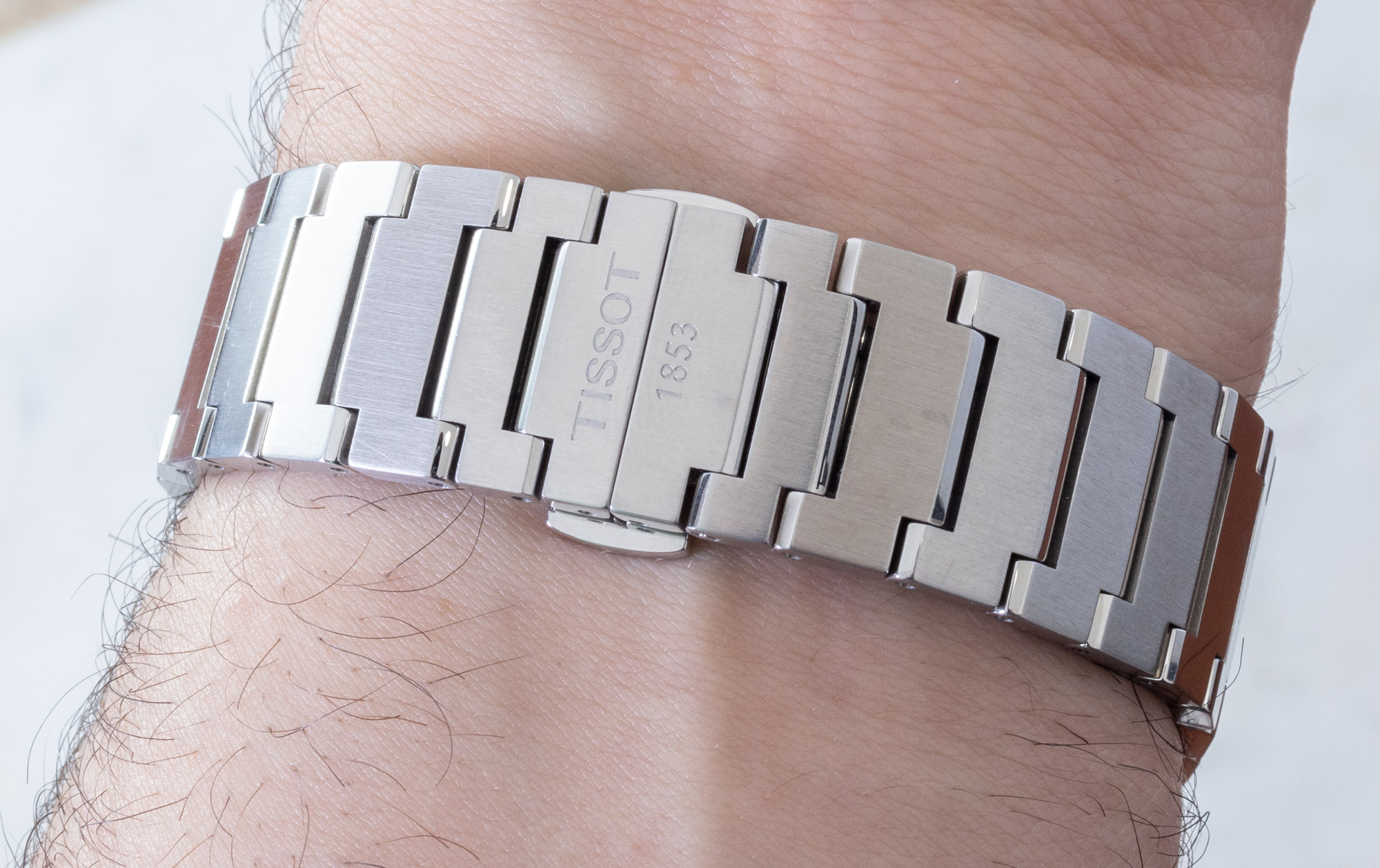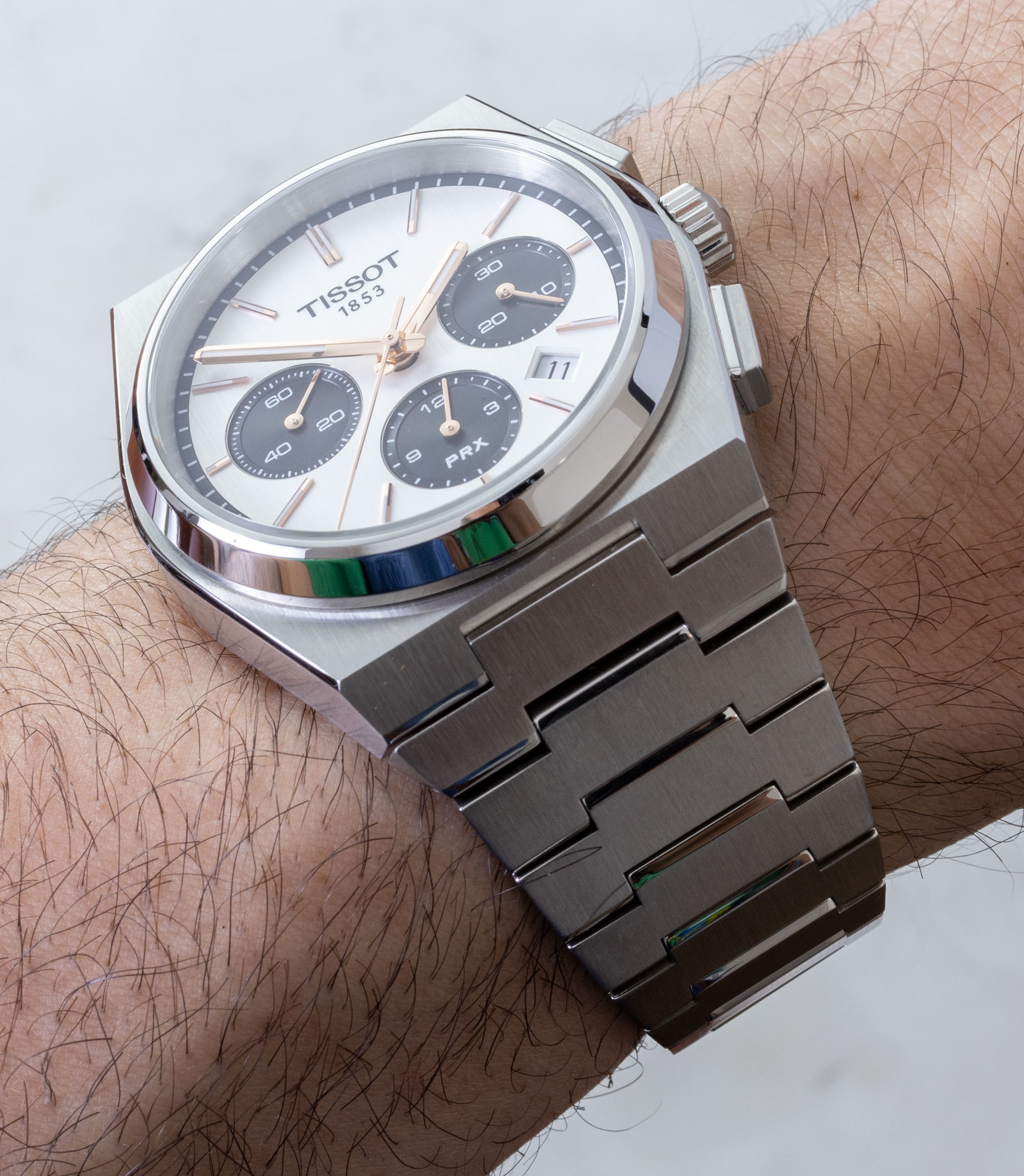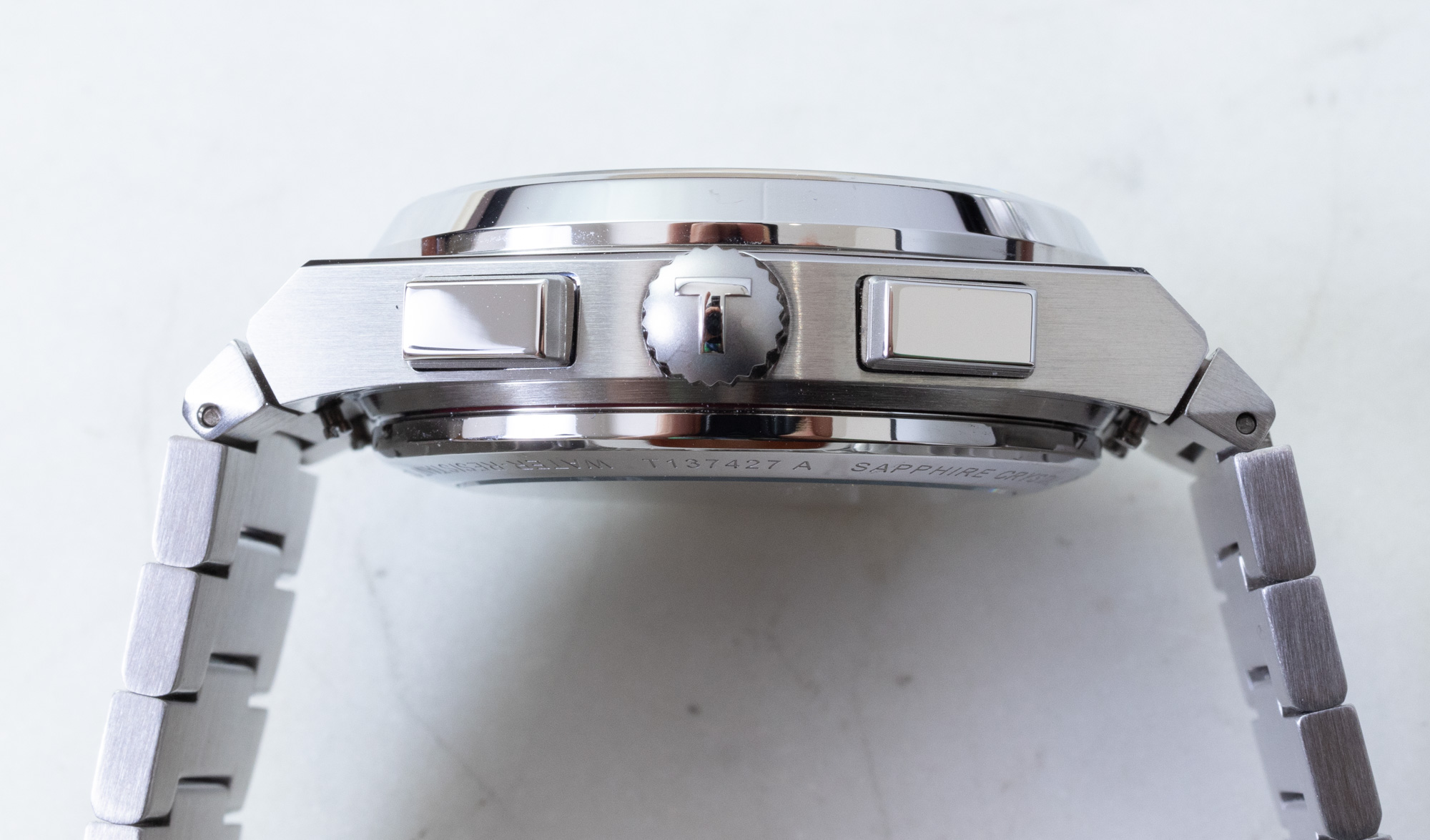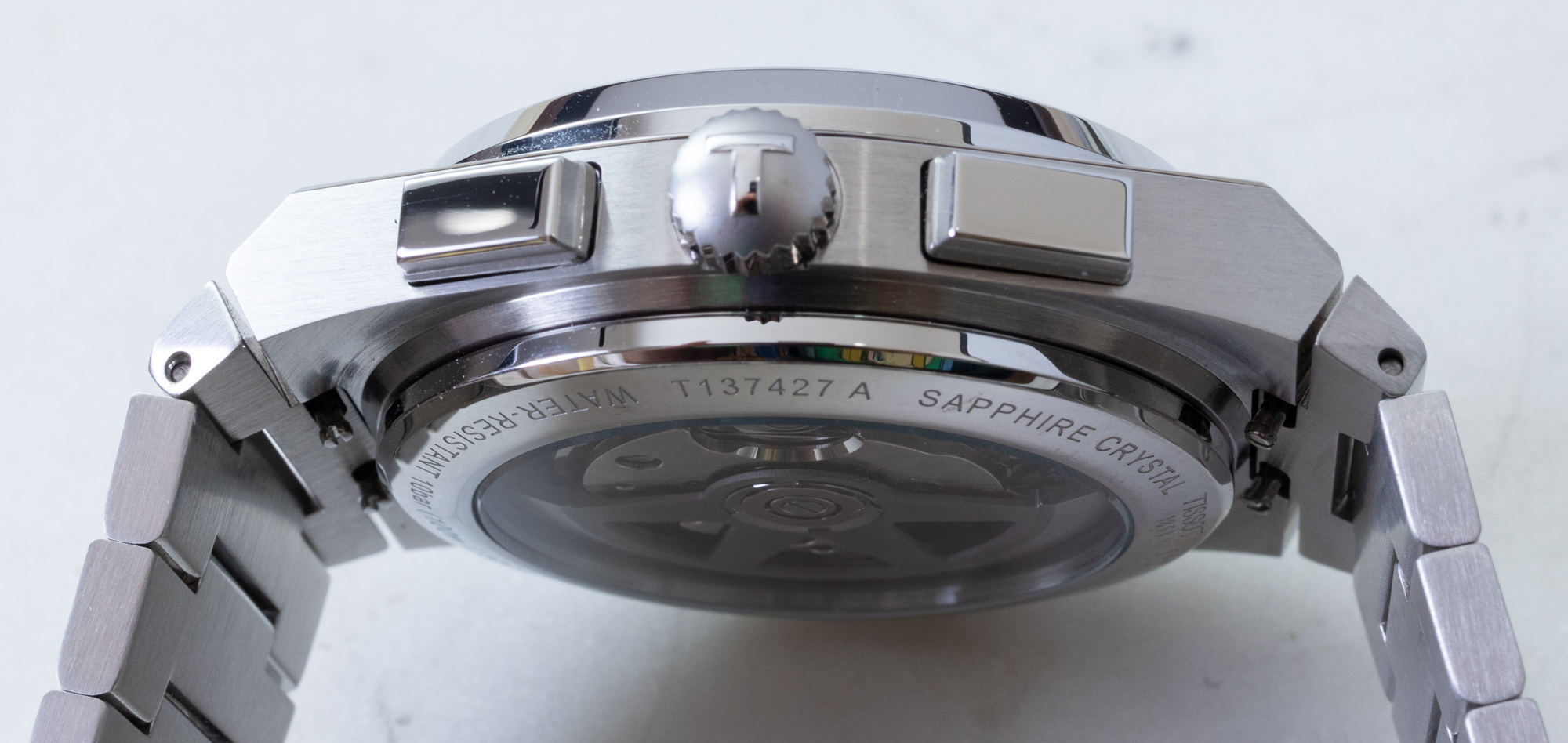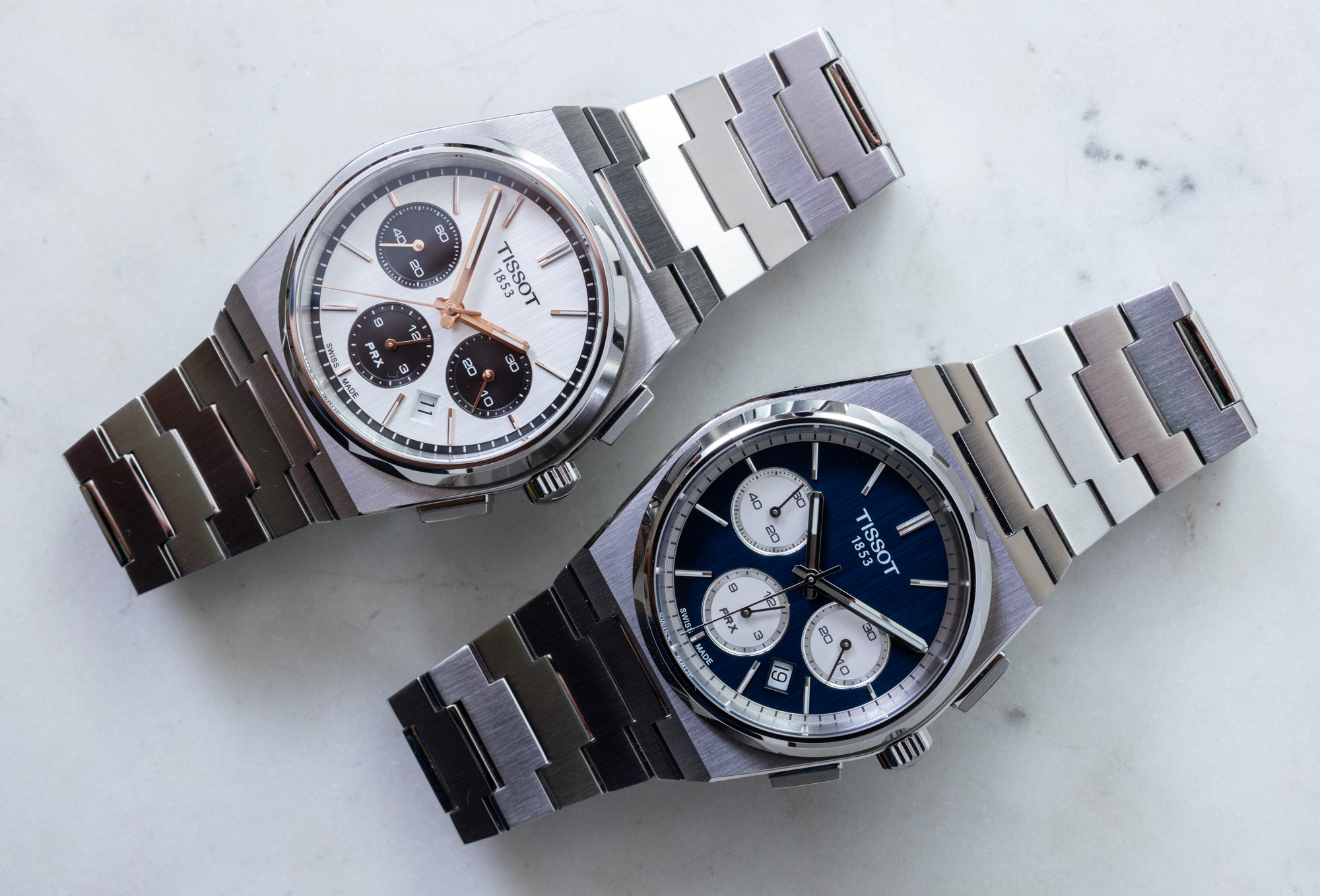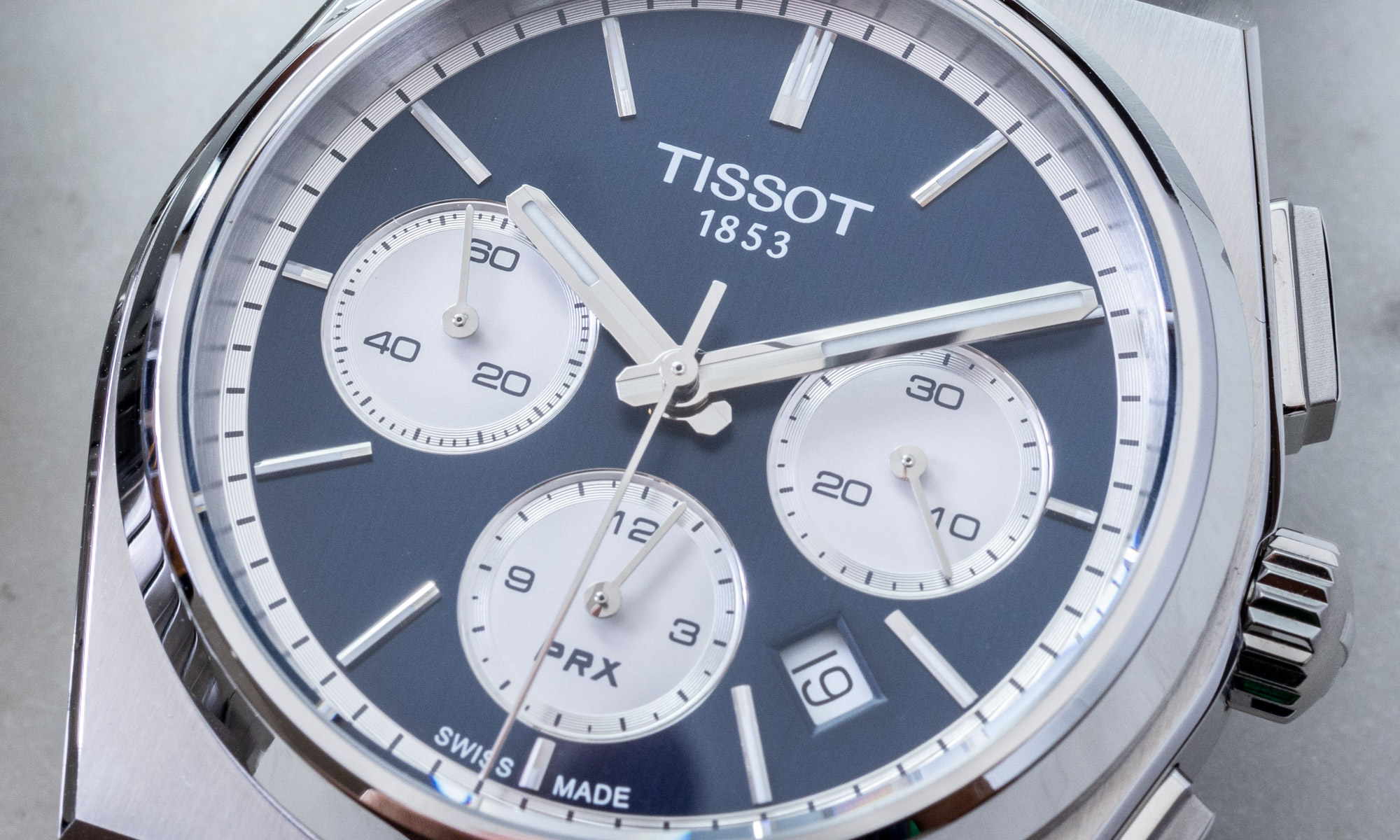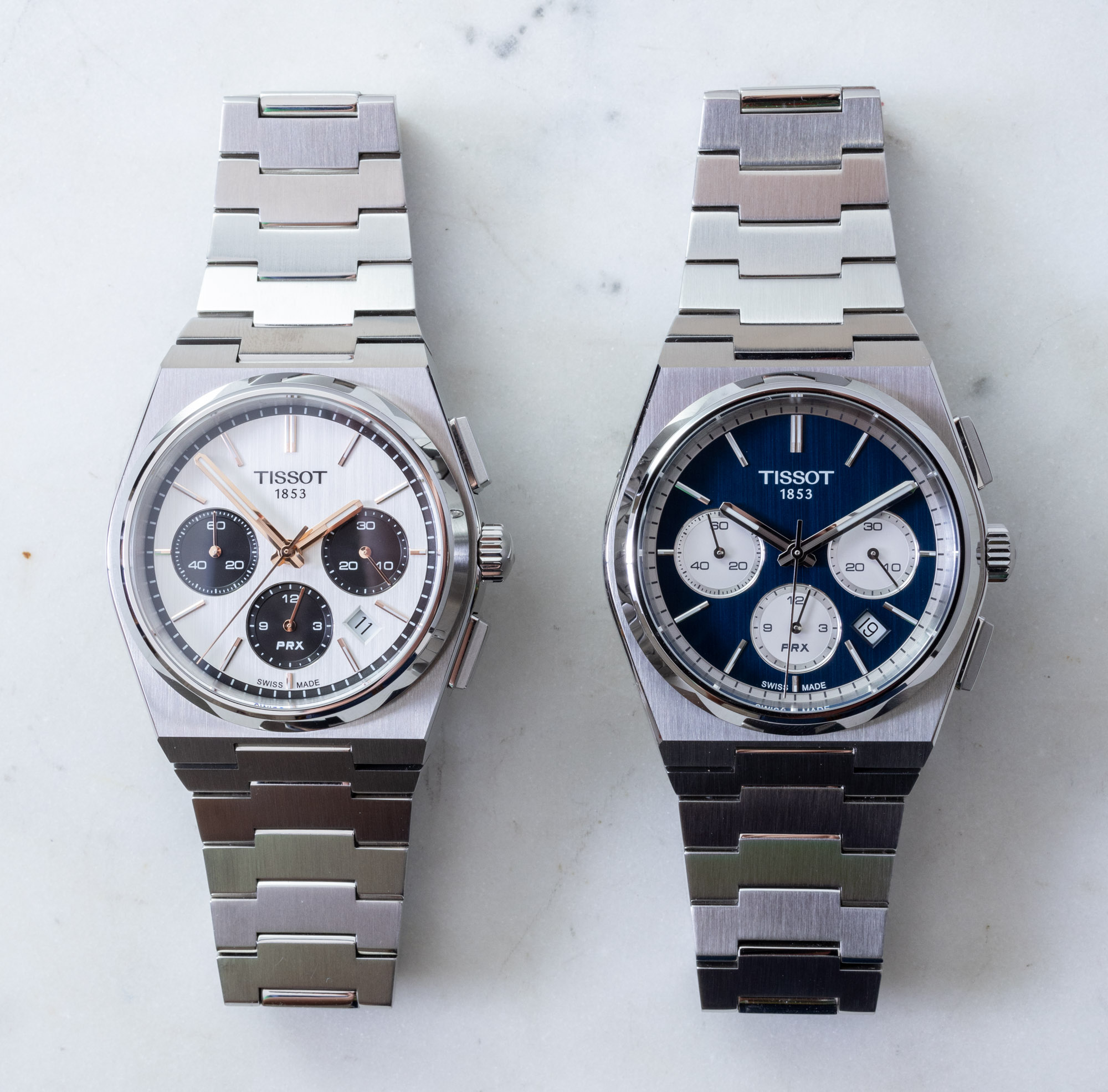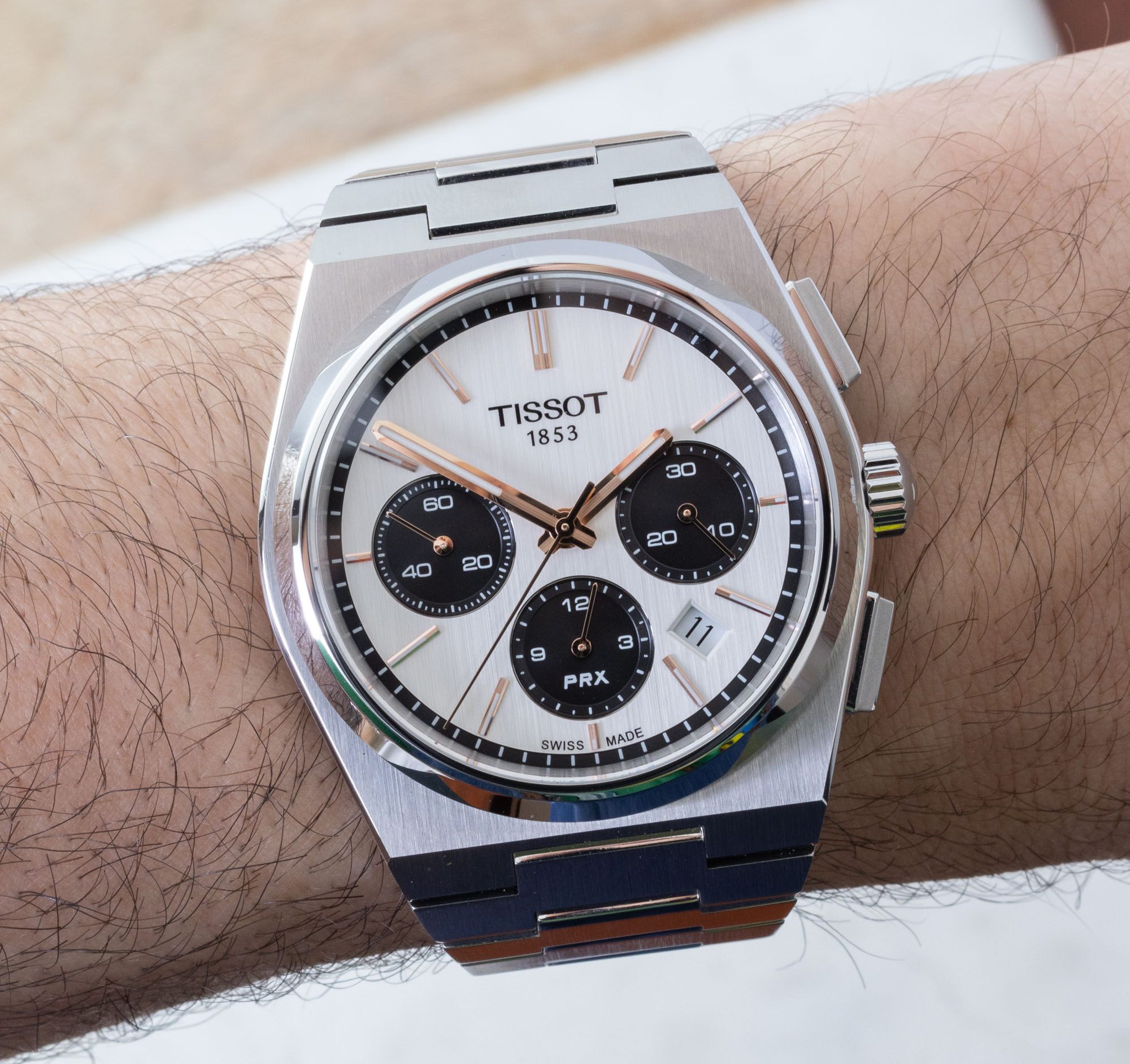
By the time you read this article, Tissot’s latest installment in the PRX collection should be available for purchase — and it is the most high-end Tissot PRX yet. Originally debuted on aBlogtoWatch here, today I go hands-on with the Tissot PRX Automatic Chronograph. For timepiece enthusiasts, this is going to be the most exciting PRX yet given the combination of style, features, and high-value Tissot has been able to engineer into this product. I have both debut versions for you today: the blue, silver, and white dial (reference T137.427.11.041.00) and the black, gold, and silver-tone version (reference T137.427.11.011.00) of the watch. I have a feeling that more color versions will come in the future given how popular these watches are.
The PRX collection has been exceptionally profitable for Tissot on account of the entry-level pricing (quartz versions start at under $400), as well as the trendy visual styling. I actually learned that the core case and bracelet design (which are originally from the late 1970s) came from a Tissot product called the Seastar. Today, the Seastar continues to be alive and well at Tissot but in the form of actual diver’s watches. “PRX” is a more appropriate modern name for the integrated bracelet watch with the angular character and the charming vintage sports watch vibe. Case sizes for the Tissot PRX begin at just 35mm-wide, with the standard men’s three-hand model being 40mm-wide (which comes in both quartz and automatic versions). This PRX Automatic Chronograph model necessarily pushes the size of the case larger due to the volume of the mechanical movement inside of it, which is the excellent and attractive ETA Valjoux A05.H31. The case is thus 42mm-wide, 14.5mm-thick, and has a 41.5mm lug-to-lug distance.
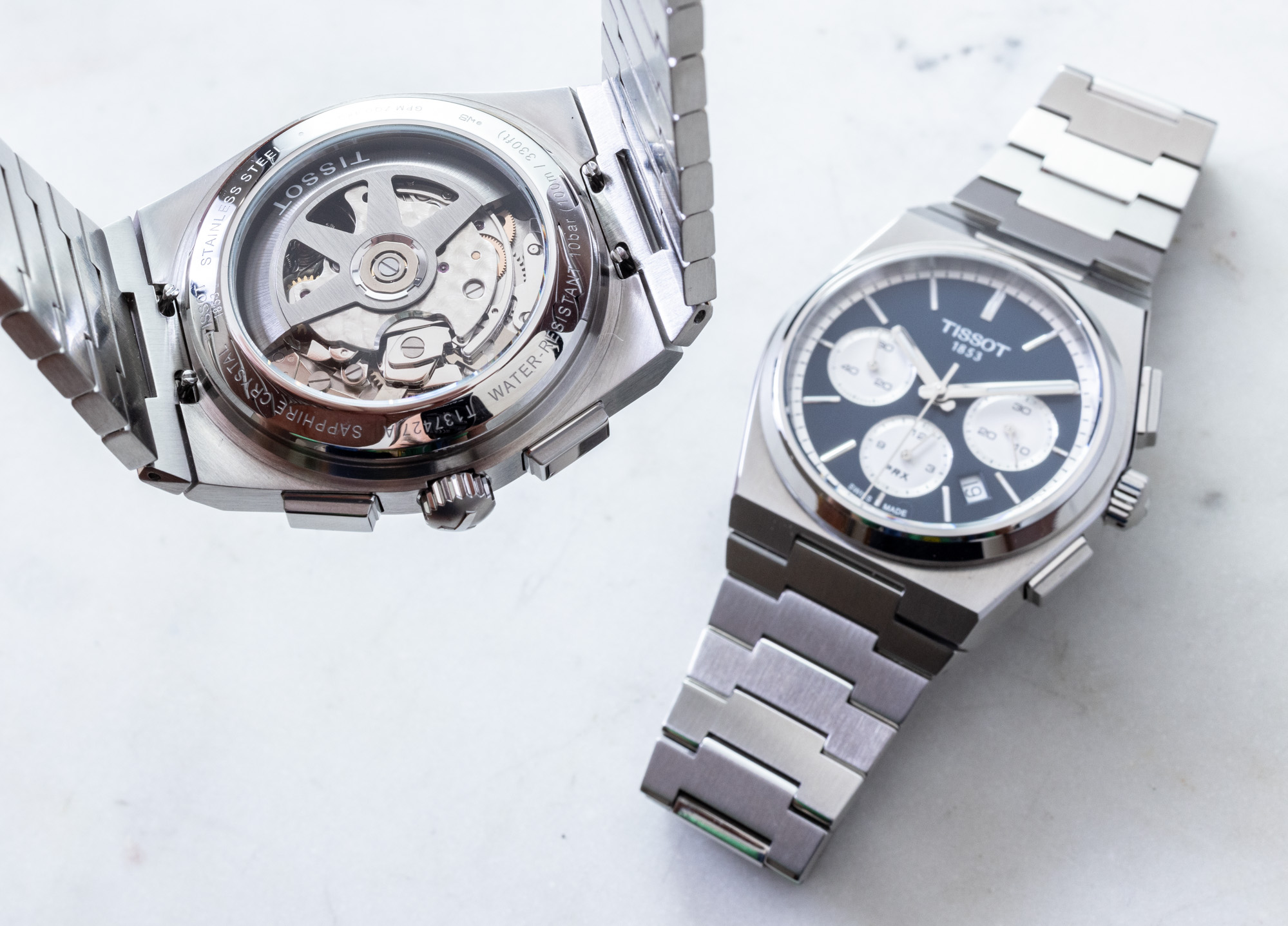
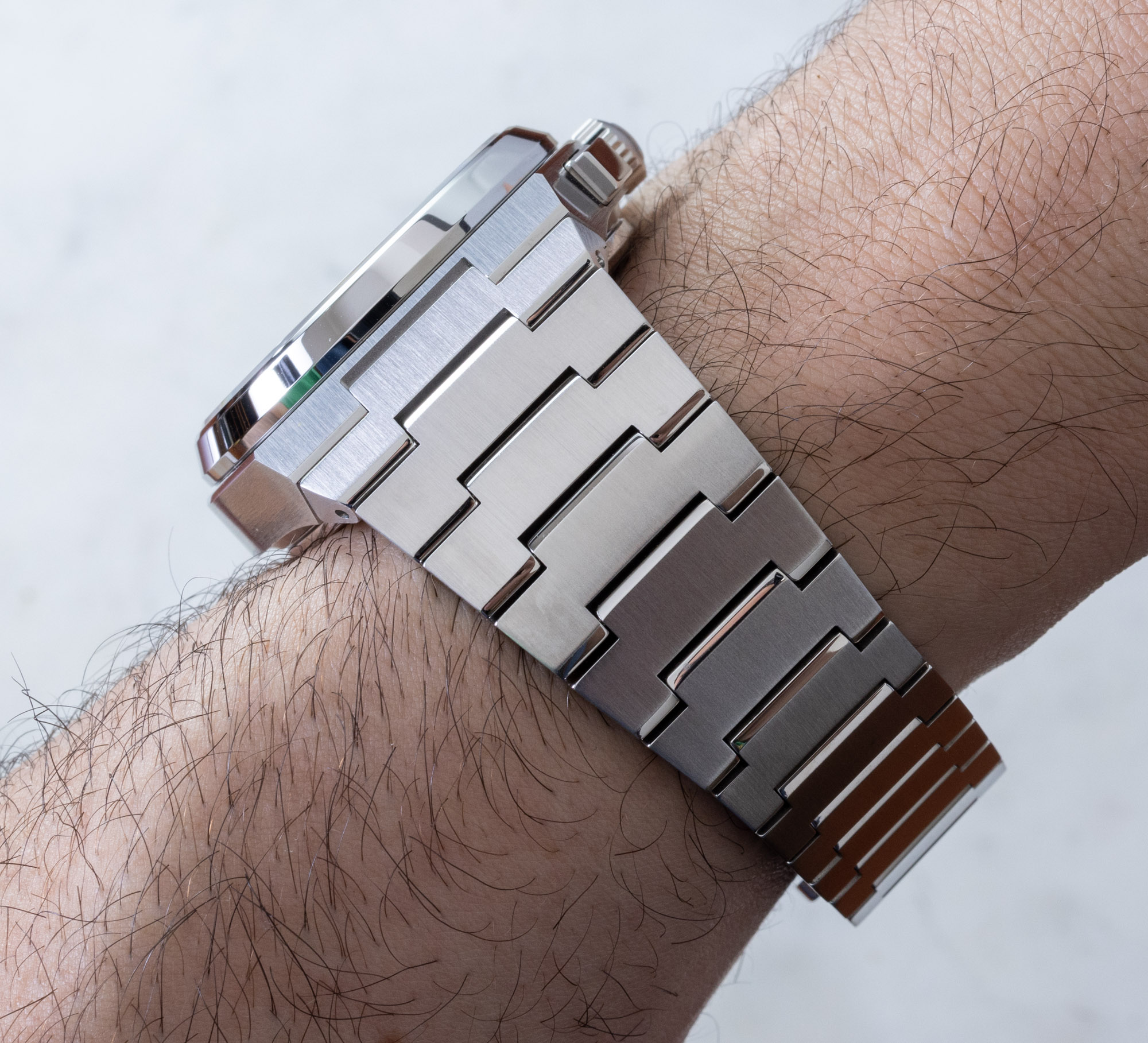
The movement is related to the famed Valjoux 7750 automatic chronograph family but is more modern and has a different orientation that is closer to the Valjoux 7753. The A05.H31 operates at 4Hz with 60 hours of power reserve and features the time, 12-hour chronograph, and date. You can see the movement through the sapphire crystal caseback, and I think you’ll agree that it is really impressively decorated for the price. Look at all those lovely polished surfaces, the perlage finishing, and the overall impressive spectacle — for well under $2,000 USD. My only issue with the movement is that, like the 7753, it continues to require pressing an in-set pusher on the side of the case in order to adjust the date. I find that a bit annoying, especially since the 7750 doesn’t have that issue. The in-set pusher, however, is a relatively small matter.
The steel case and bracelet are polished excellently given the price of this watch, but the same can be said for all of the Tissot PRX collection products. Here, the larger case dimensions offer a steep polished bezel, attractive broad, brushed surface area for most of the case, with polished angles and elements throughout. The big, blocky chronograph pushers are easy to find and activate and lend a strong, masculine sense to the overall wrist presence. The piece might have a fashionable look to it, but in operation, the PRX Automatic Chronograph feels very much like a tool watch. It is heavy on the wrist on account of all the metal, but when matched with a properly sized bracelet, the case does wear very comfortably.
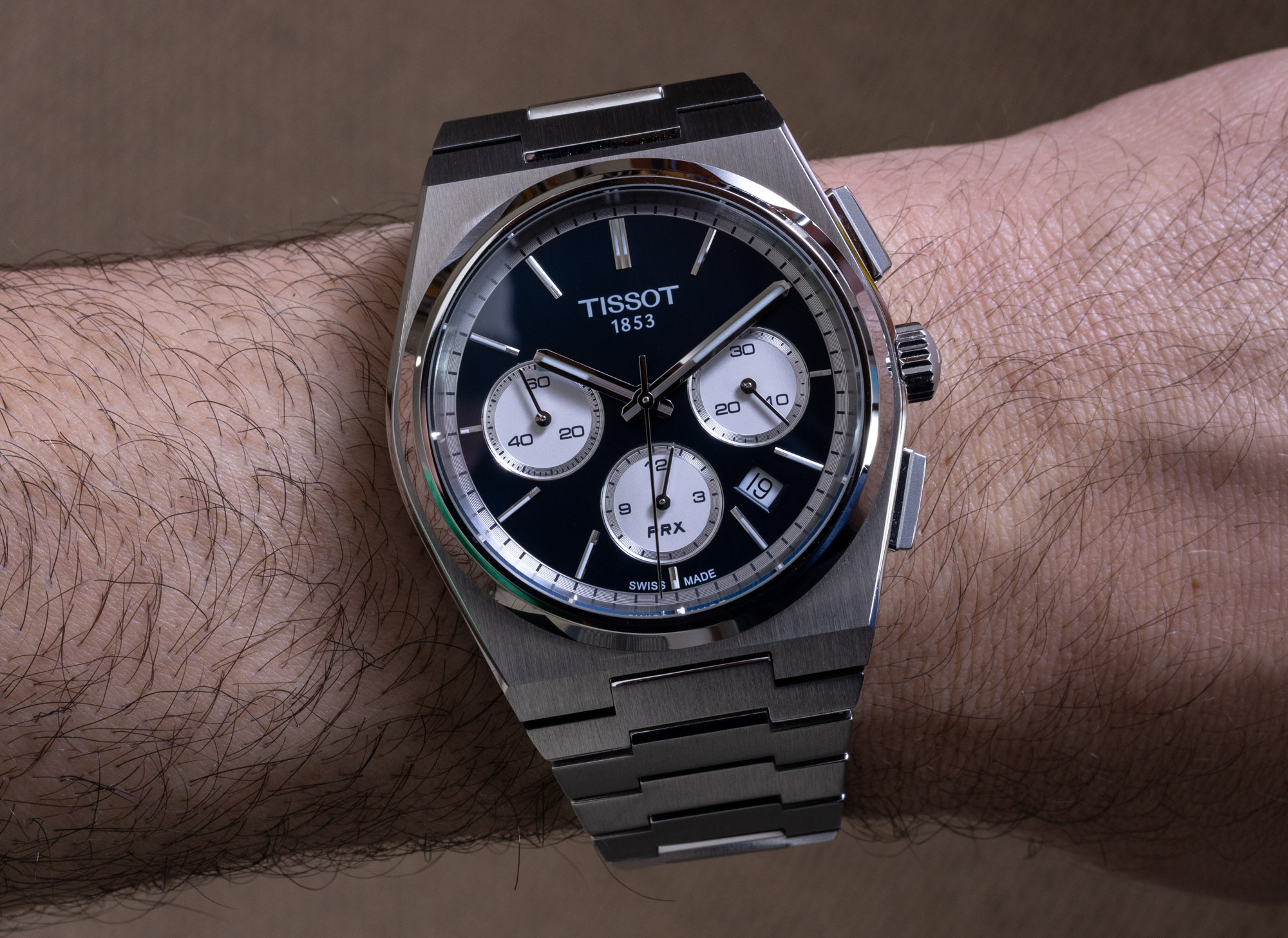
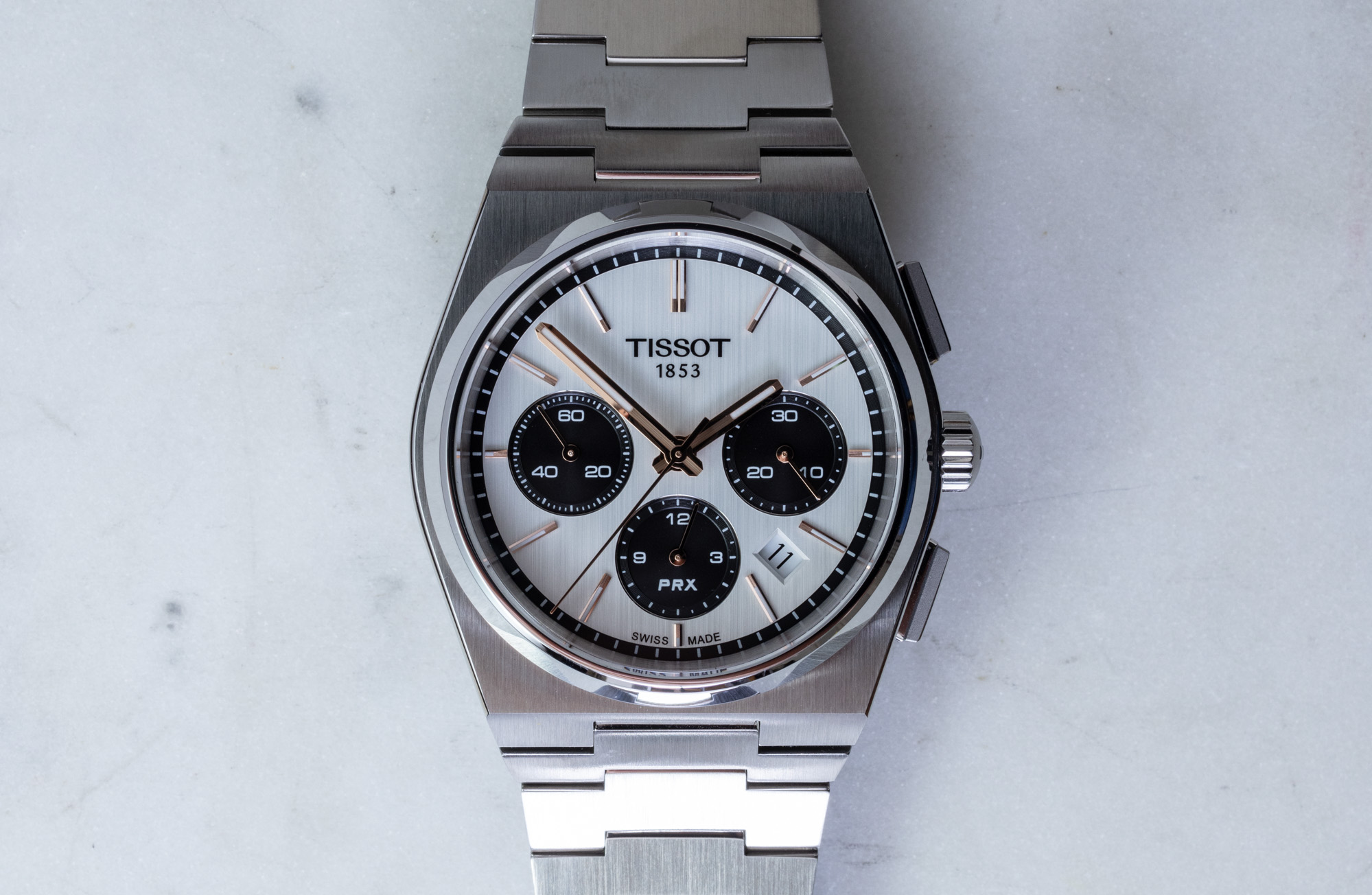
You might also notice that like all PRX watches the bracelet is put on quick-release spring bars, allowing you to remove it without tools. Tissot has started to sell the PRX on non-metal bracelets including a leather strap option. Those aren’t currently available for the PRX Automatic Chronograph, but I can see leather and even rubber straps being made available by Tissot for later purchase. These watches on an appropriately interesting rubber strap open up a whole new area of fashionable or functional wearing opportunities, and a level of visual sporty-coolness that future Tissot PRX Automatic Chronograph watches might settle into.
These debut models certainly go for a classic look with the “gilt panda” white dial with the gold accents, and the “jeans-friendly” sharp looks of the blue and silver model. These are both eye-pleasing dials, but you can see how Tissot has lots of room to grow when it comes to the visual style that would make sense for this versatile dial design. Speaking of the dial, it combines a traditional 1960s-era chronograph look with a modern design that combines applied dial elements, various dial textures, and a bit of polish in the form of the hands. I would have personally chosen non-polished hands, perhaps painted. Tissot did want to give a bit of a flashy vibe to the watches given their higher-end pricing (for Tissot), so the polished hands do make sense given some of the brand’s marketing goals.
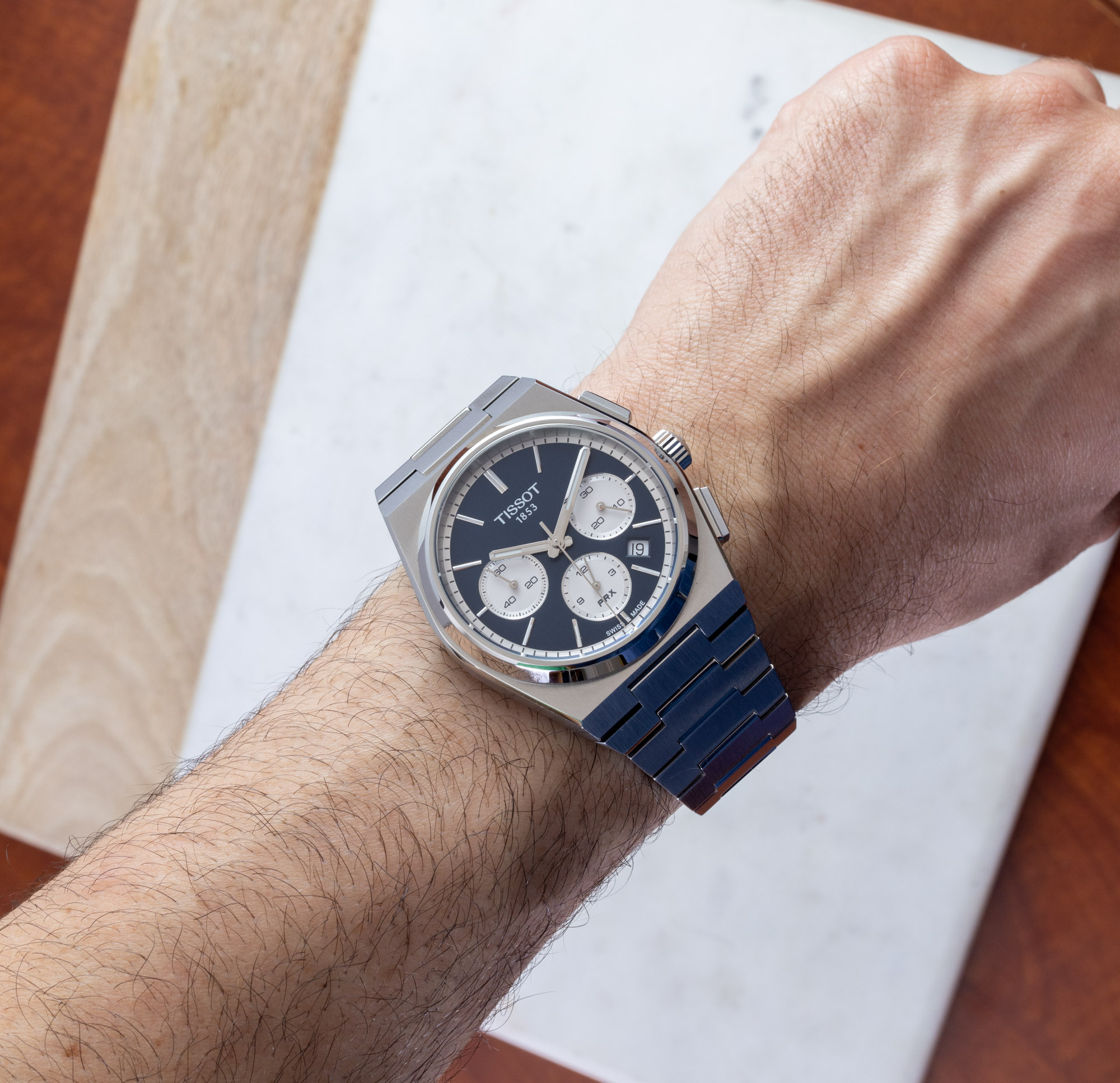
The dial is very legible, but there are only modest amounts of Super-LumiNova on the hands and hour markers. Over the dial is a flat AR-coated sapphire crystal, and the case is water-resistant to a competent 100 meters. The great thing about the Tissot PRX Automatic Chronograph is that you really don’t need to engage in too much storytelling to sell it. The good looks, classic style, high-end looks, and great pricing nearly sell itself. This is part of a Tissot that is actively getting its groove very much back, and I’m thrilled to see really great Tissot watches for both under $500, and over $1,500. Accordingly, these two Tissot PRX Automatic Chronograph watches have a retail price of $1,750 USD. Learn more at the Tissot watches website.

